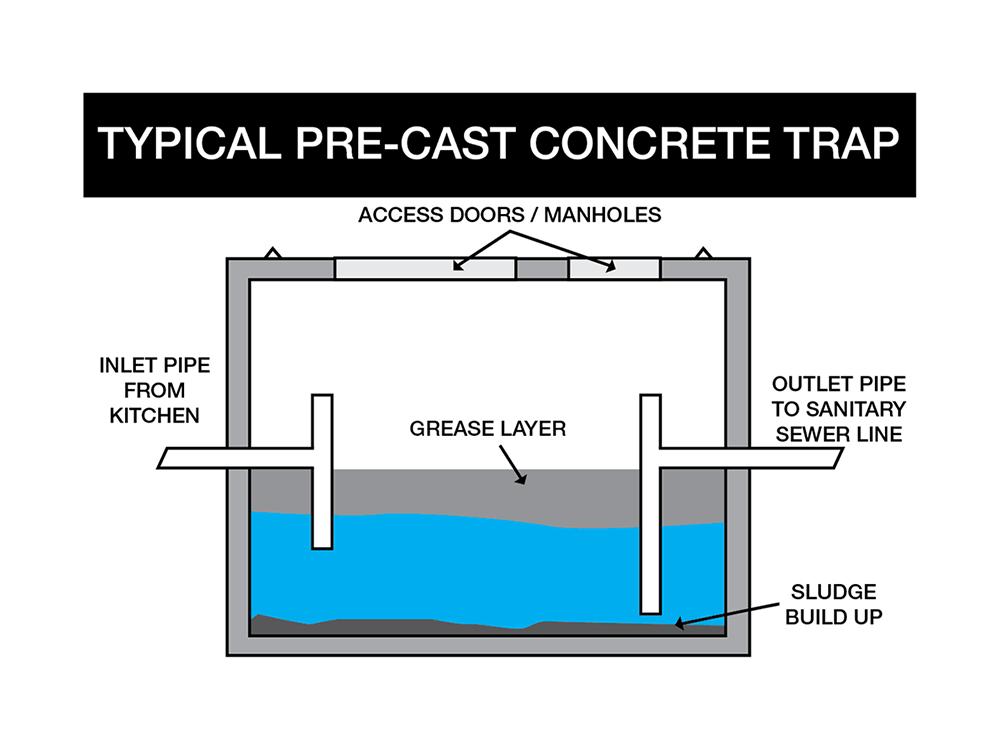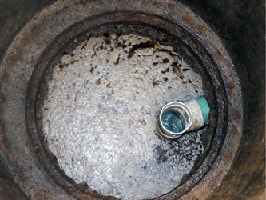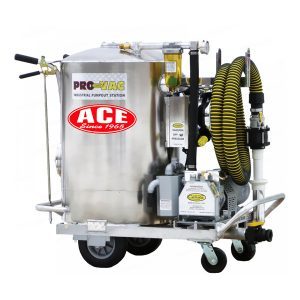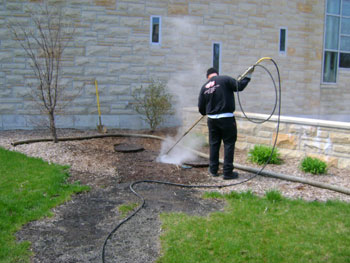Grease traps and interceptors are used primarily in kitchens and restaurants in Holland, Toledo, and Silica, OH. They remove and retain the grease that builds up over time in wastewater. The use of grease traps is standard per health and safety codes in most commercial food preparation applications. In addition to temporary fencing and porta-potty rentals, Ace Diversified Services offers grease trap pumping and maintenance!
How Do Grease Traps Work?
Grease traps or interceptors are required by municipalities to stop fat, oil and grease (FOG) from entering the city’s sanitary sewer system. Grease traps are created to fit the sinks they are connected to, and remove between 25 and 85% of the grease that builds up in the wastewater.

Passive Grease Trap
is commonly placed inside and under the sink or drain in a commercial kitchen. Most passive grease traps hold 20 to 50 gallons of wastewater. Typically, heavy sludge builds up on the bottom of the tank, pushing wastewater through the outlet to the sanitary sewer line. Lighter grease and oil floats on top and is stopped from entering the outlet by baffles. Baffles are used to separate the grease and oils and are easily removable for grease trap cleaning and grease trap pumping. After all the material is pumped from the trap, any grease buildup should be scraped from the sides of the tank. Hot water (from the sinks) should be used for cleaning the outlet, inlet and inside of the tank.

Pre-cast Concrete Trap
is commonly placed outside of the restaurant and can range from 500 to 3,000 gallons. Heavy sludge builds up in the bottom of the tank while fats and oils float to the top and form a small scum/grease layer. Wastewater is pushed out to the sanitary sewer from the sludge buildup. After all of the material (FOG) is pumped out of the trap, the grease buildup should be cleaned from the inside of the tank by power washing. Ace Diversified Services recommends having this done yearly or semi-annually depending on the amount of usage.
Should I Use Additives or Chemicals In My Grease Trap?
Additives are any material added to the drains or grease interceptor/grease trap used to reduce, remove, or emulsify the materials in the grease interceptor/grease trap as part of the maintenance of the grease interceptor/grease trap.
Additives often provide a valuable maintenance role between scheduled pump outs of the grease interceptors including: the control of odors, maintaining Biological Oxygen Demand (BOD), Total Suspended Solids (TSS), and Fats, Oils, & Grease (FOG). Many additives however, are simply designed to emulsify and suspend waste that has been or is being collected in the Grease interceptor helping it to pass out of the community wastewater collection system, all additives being used to treat the grease interceptors/grease traps that contain significant amounts (more than 1 percent) of emulsifiers including (Enzymes, Detergents, Surfactants) are strictly prohibited.
When Should I Get Grease Trap Cleaning?
Every business has a different grease trap cleaning schedule as it depends on the amount of usage as well as the size of your trap. The experienced professionals at Ace service our grease trap customers weekly, monthly, quarterly, semi-annually etc. We can customize a grease trap pumping schedule to meet the needs of your business.


Hot Powerwashing
Ace recommends you have your grease trap power washed to clear debris from the bottom of the tank and side walls. Ace Diversified Services will also inspect the tank for cracks and wear. This service will help keep the system maintained and in good working order.



